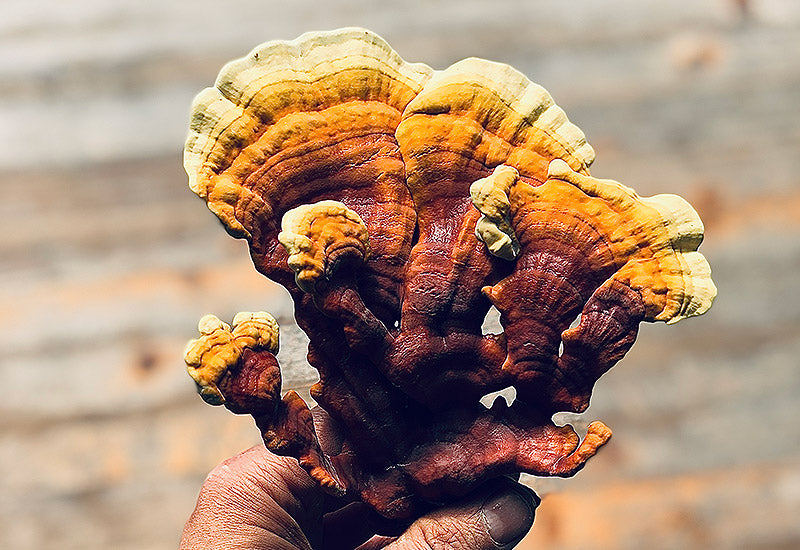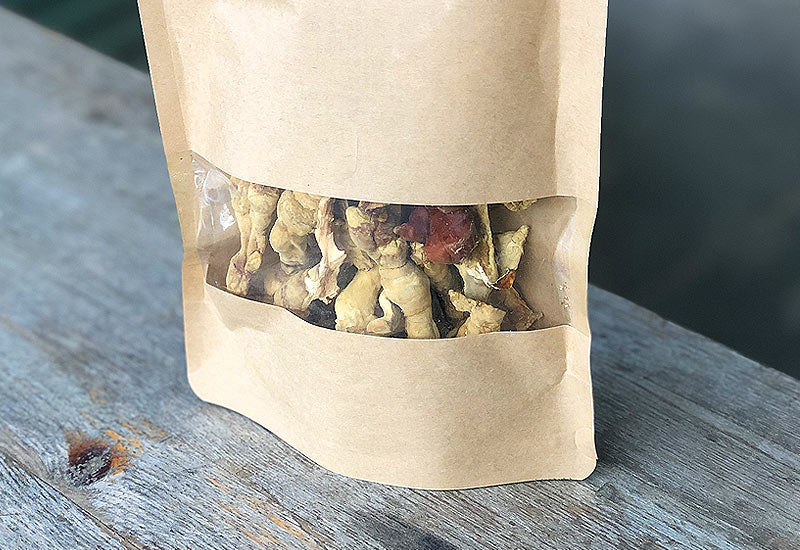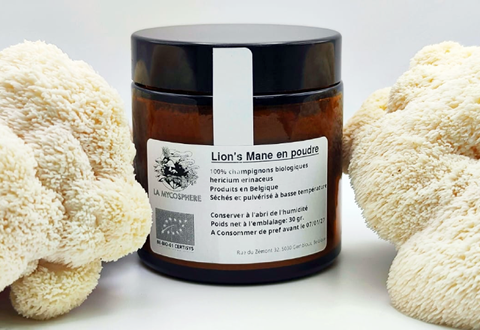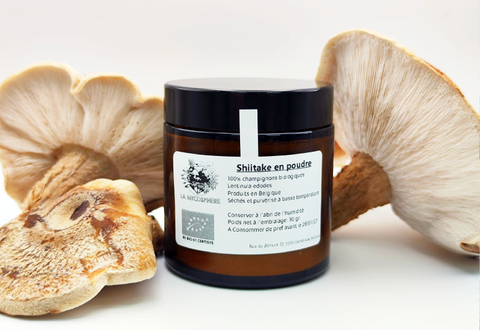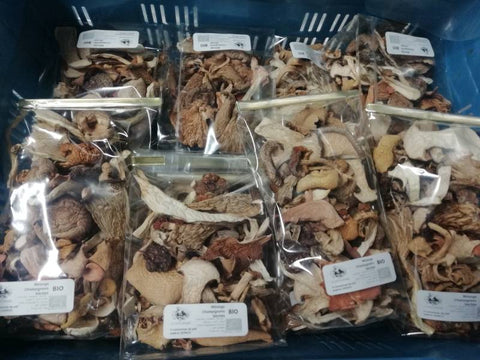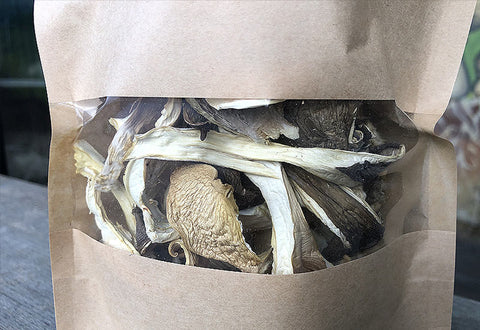Organic Dried Reishi Mushroom
- 🍄 GANODERMA LUCIDUM: Whole mushrooms dehydrated at low temperature to preserve all their nutritional qualities (beta-glucans, triterpenes).
- 🌱 ORGANIC QUALITY & CERTIFICATION: Certified "BE-BIO-01" by CERTISYS, guaranteeing environmentally friendly cultivation and a product of impeccable purity.
- 🇧🇪 LOCAL PRODUCTION: Grown in Belgium by us, from spore to dried mushroom. Total traceability and transparency that distinguish us from imported products from China often of questionable quality.
- 🤍 A WELLNESS ALLY: Known for millennia in Asia, Reishi fits perfectly into a routine promoting balance, vitality, and serenity.
- 🥗 100% NATURAL: Raw, vegan, additive-free, lactose-free, and gluten-free — ideal for a healthy and balanced diet.
Whole Reishi mushrooms (Ganoderma lucidum), grown and dehydrated in Belgium at low temperature.
Also called the “mushroom of longevity,” Reishi holds a unique place in Asian traditions, where it has been valued for millennia as a symbol of balance and vitality. Its woody and slightly bitter flavor makes it an ideal ingredient for preparing infusions or decoctions, to incorporate into your daily wellness rituals.
Our Reishis are grown in Belgium, certified organic and dried at low temperature (<42°C) to preserve their natural richness. Treat yourself to an authentic product, environmentally friendly and stemming from artisanal know-how, at the crossroads of tradition and local quality.
Why choose our Reishi?
- 🌱 Certified ORGANIC (BE-BIO-01, CERTISYS): a 100% organic and sustainable cultivation.
- 🇧🇪 Local production: from spore to dried mushroom, every step is mastered in Belgium.
- 🍄 Premium quality: only the fruiting body, no mycelium or filler powder.
- 🌍 Total traceability: unlike most Reishi imported from China, we guarantee a transparent local origin.
- 🥗 100% natural: raw, vegan, additive-free, lactose-free, and gluten-free.
Our cultivation method
We produce our 100% organic substrate from beech sawdust and cereals from our region. This substrate is pasteurized, then inoculated with our carefully selected Reishi strain. The cultivation takes between 3 and 4 months, with precise control of humidity and air renewal to ensure optimal growth of the fruiting bodies.
After harvest, we practice slow drying at low temperature (<42°C) to best preserve the aromas and natural compounds. As a guideline, 1 kg of dried Reishi corresponds to 10 kg of fresh mushrooms.
Average nutritional analysis (per 100 g)
| Nutrients | Values |
|---|---|
| Energy (kJ/kcal) | 200–400 kcal |
| Lipids | 2.1 g |
| of which saturated fatty acids | 0.54 g |
| Carbohydrates | 2.6 g |
| of which sugars | 1 g |
| Fiber | 78 g |
| Proteins | 9–15 g |
| Salt | 0 g |
Storage
Store in a dry place, away from light and humidity. Minimum shelf life: 1 year.
Usage ideas
- Infusion: simmer a few slices of Reishi in water for 20–30 minutes, then strain. Enjoy plain or with honey and ginger.
- Reishi coffee: Cut and grind your reishis as finely as possible and add to your hot drink for an adaptogenic beverage.
- Broths and soups: add some pieces of dried Reishi during the cooking of your stews (remove them before plating).
- Double artisanal extraction: perform an alcoholic maceration followed by a water decoction to obtain a concentrated extract (traditional method).


